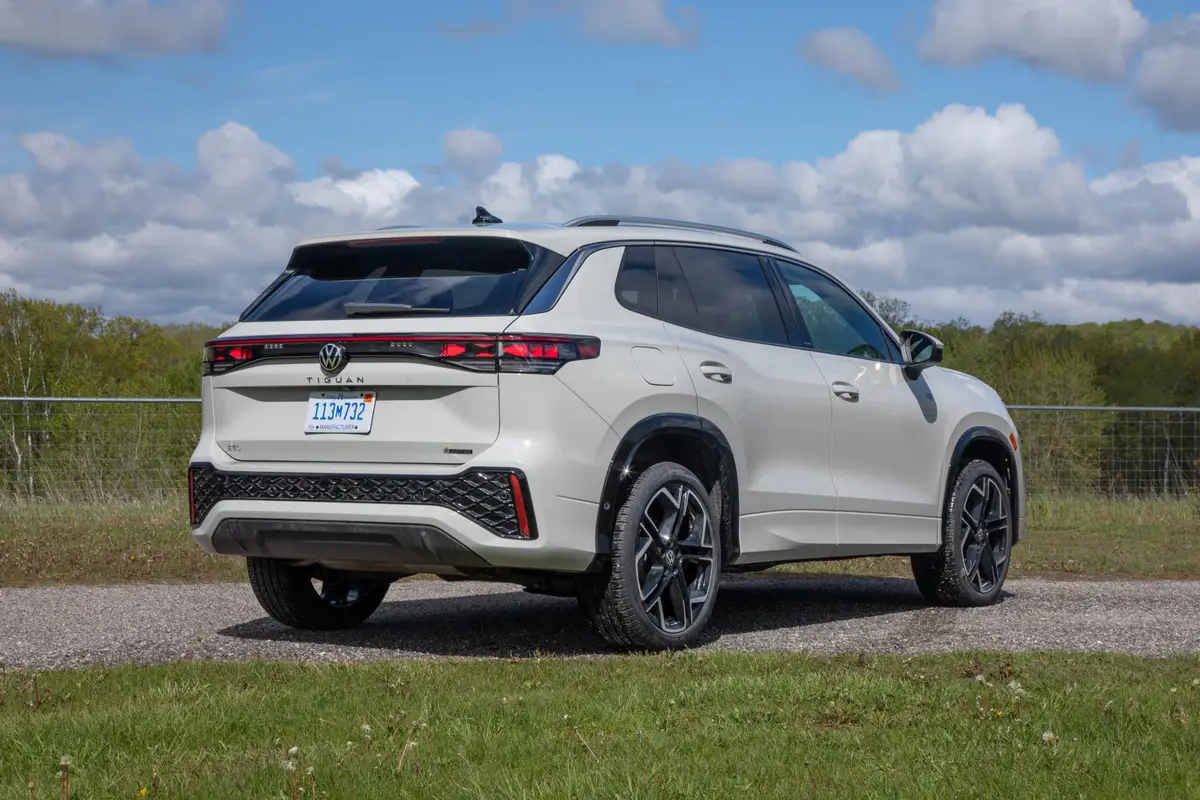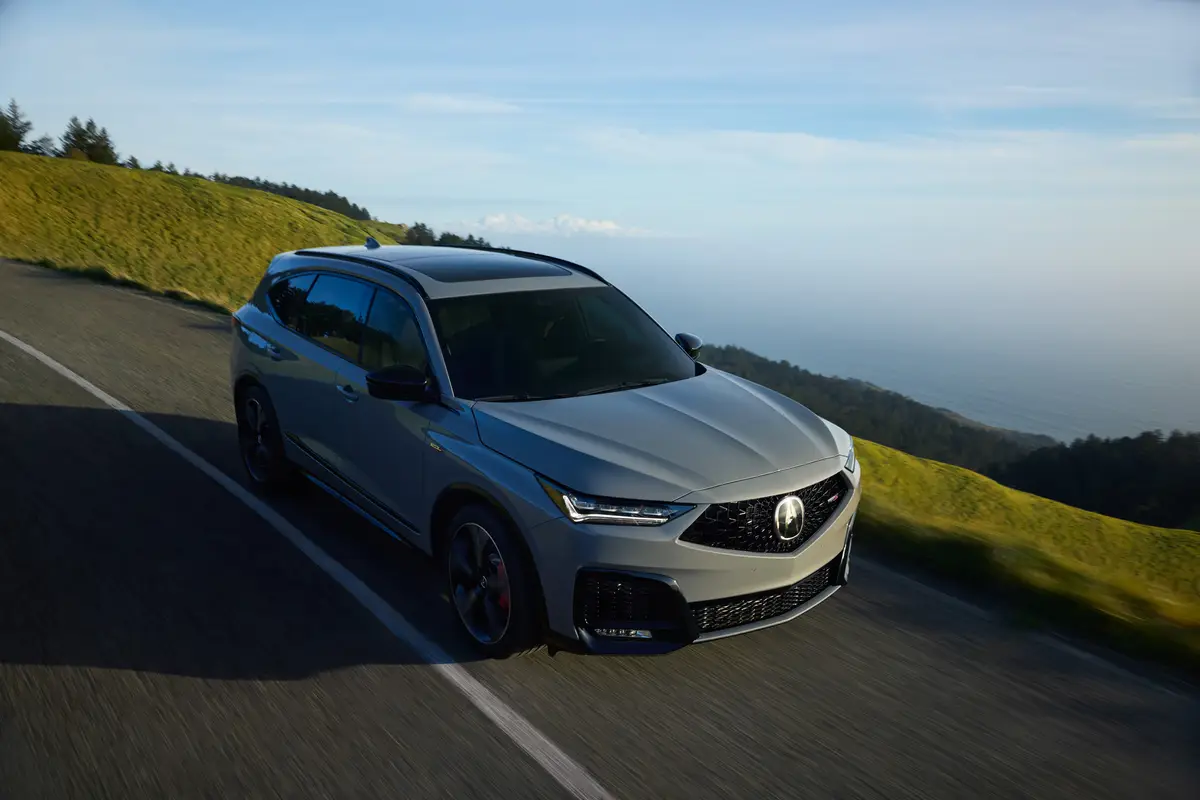chicagotribune.com's view
No ping, but plenty of zing in E320 CDI
Do you miss starting your car each morning, sitting back and enjoying the aroma of diesel fumes escaping from your car?
Mercedes-Benz, inventor of the diesel for passenger cars back in 1936, thought you might, especially since it hasn’t offered a diesel in the U.S. market since 1999.
So it has brought out the ’05 E320 CDI, a diesel rendition of its gas-powered luxury midsize sedan that’s now arriving in showrooms.
But if a diesel aficionado, be advised that even if you take a deep breath you might not smell the fumes like you once did.
And you won’t hear the constant ping-ping-ping from the engine compartment when you start up each morning, commotion so loud you’d wake the neighbors and have to hide in the basement the day of the annual block party.
And you don’t have to sit back and have a cup of coffee waiting for the engine glow plugs to heat to sufficient temperature for the fuel to ignite.
And you don’t have to linger in traffic because the diesel lacks the energy to keep up with–forget catching and passing–anyone else on the road other than the guy in the 20-year-old sedan with the hazard lights flashing.
This Mercedes diesel is nearly odor- and noise-free, and boasts so much power that you’ll actually pull away from the light faster in this 3.2-liter, inline 6-cylinder oil burner than you will in Mercedes’ gas-consuming 3.2-liter V-6 engine offered in the rest of the E320 line.
Mercedes, in other words, has taken most of the woes out of diesel ownership.
Well, not totally.
You still have to find a station that pumps diesel fuel and that could mean waiting in line behind an 18-wheeler or two pumping more fuel into their trucks at one stop than you could consume in six months.
And at the pump, the hose and nozzle will still be covered in oily residue, which means even if careful not to get it on your clothes, you certainly will get it on your hands. And if you don’t remember to carry a few scented towelettes, be prepared to have your fellow workers sit or stand 20 yards and upwind of you in the office or factory.
To simplify the magic of the CDI (Common-rail Direct Injection) engine, suffice it to say that the 3.2-liter inline 6 diesel is noticeably quiet thanks to more and larger fuel injector openings (seven versus one), high pressure injection and spraying a small amount of fuel into the cylinders just before ignition to quiet the traditional bang, Mercedes says.
While the Mercedes 3.2-liter gas V-6 boasts 221 h.p. and 229 foot-pounds of torque, the diesel delivers 201 h.p., but produces 369 foot-pounds of torque for off the line, into the passing lane or down the merge ramp bursts of power–with clatter at a minimum.
Thank the turbocharger for providing some of the muscle, but tip your hat to the engineers who tinkered and tweaked with inj ectors, spray patterns and combustion pressures for V-8 spirit in a diesel 6.
Better yet, you enjoy 27 m.p.g. city/37 m.p.g. highway mileage, versus 19 m.p.g. city/27 m.p.g. highway with a gas-driven E320.
But best yet, you benefit from increased driving range and the ability to travel long distances before having to worry about finding the next diesel fuel pump.
We traveled 360 miles and used less than a half-tank (21-gallon tank total) of fuel. The promise of at least 700 miles of travel without having to make a pit stop is what made diesels attractive years ago and what makes the E320 CDI equally attractive today–even more so thanks to so little noise, so little diesel fume stench, yet so much turbo diesel muscle.
One of the gripes of some energy-conscious consumers is that so few automakers offer diesels today and have focused, instead, on gas/electric hybrids. The gripe is: Why don’t they do like they do in Europe and offer diesels here?
The answer is that Europe enjoys low sulfur “clean” diesel fuel while the U.S. is saddled with high sulfur content. The U.S. government has mandated that petroleum companies start using low sulfur fuel here, but the starting date is ’06 With the current high sulfur fuel, diesels can’t meet oxides of nitrogen regulations in five states–California, New York, New Hampshire, Maine, and Massachusetts.
So the E320 CDI can only be sold in 45 states now, which is one reason (awaiting the new fuel in ’06 is the other) Mercedes will only bring in about 3,000 copies each year.
With only 3,000 copies Mercedes obviously isn’t looking to attract a new fan base, but rather is catering to former diesel owners who miss the fact the diesel travels about twice as far as a gas powered car before refueling.
“We’re not talking 100,000 people, but 25,000 to 50,000 who became diesel fans,” said Mercedes spokesman Jim Resnick of the potential market for the E320 CDI and diesels in general.
If you objected to diesels for their noise, stench and lack of power, the ’05 E320 CDI gives you reason to reconsider.
But some might say, whoa, the recent J.D. Power initial quality rating had Mercedes-Benz ranked lower than its partner Chrysler, hardly motivation to invest $49,075 in a Mercedes, much less a diesel.
But Resnick riles at the Power study.
“The No. 1 complaint of Mercedes owners is excessive brake dust on the wheels. The reason is that we use a compound in the pad to provide high-performance braking ability so you can stop on a dime. But in the Power study, brake dust is reported as brake failure,” he said.
Couldn’t fault the E320 CDI tested. Rock solid. Room and comfort, style and performance, smooth and sure-footed ride and handling. And no brake dust after a week’s driving.
As noted, the E320 CDI starts at $49,075, and goodies include 5-speed automatic with touch shift manual, dual-zone climate control, AM/FM with single-disc CD player, front- and side-impact air bags (with weight sensing passenger bags that determine if the bag should deploy and at what speed based on passenger weight), front- and rear seat-side air-bag curtains with a rollover sensor, electronic stability control, four-wheel anti-lock brakes and power seats/door locks/mirrors/windows.
But how high you go depends on how big the inheritance, such as $1,260 for a glass sunroof, $1,220 for a navi system and $1,200 for a lighting package with headlamps that change their light pattern going into or out of a curve based on angle of the steering wheel, items all added to the test car.
However, you still can add $1,180 for Drive-Dynamic seats with side cushion bladders that inflate or deflate automatically on either side in response to vehicle motion to keep you in place; $500 for power trunk closer; $1,250 for air conditioned seats; and $1,260 for Keyless Go, so that if you accidentally dro p your keys in the trunk and slam the lid, thanks to sensors in the fob, the lid will automatically open so you can retrieve the keys.
TEST DRIVE
2005 Mercedes-Benz E320 CDI
Wheelbase: 112.4 inches
Length: 189.7 inches
Engine: 3.2-liter, 201-h.p. turbocharged diesel inline 6-cylinder
Transmission: 5-speed automatic
Fuel economy: 27 m.p.g. city/37 m.p.g. highway
Base price: $49,075
Price as tested: $55,905. Includes $680 for granite gray paint; $1,500 for leather seats; $1,260 for glass sunroof; $1,220 for DVD navigation system; $970 for heated front seats; and $1,200 for lighting package with bi-xenon headlamps and lamp washers. Add $720 for freight.
Pluses: Quicker off the line than the 3.2-liter V-6 gas engine thanks to the diesel’s 369 foot-pounds of torque. Quiet diesel with almost imperceptible ping. Economy-car mileage in a luxury sedan. Wide range of standard goodies, from elec ronic stability control to side air-bag curtains front and rear with sensors that automatically deploy the bags in a rollover.
Minuses: Don’t get stuck behind an 18-wheeler at the diesel pump. Prepare to wash hands after every refueling to erase diesel odor. Total of all the options equals the price of another car.
Latest news



